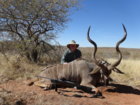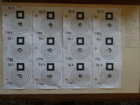Folks, I understand this has most likely been discussed ad nauseam; but I wanted to see what the current favorite method of load development is for non-BR applications. Specifically; what's your preferred method for finding a good load in sporter weight barrels? I read the most recent thread on a ladder test in a sporter 270 where some suggest that reading such a test on a light barrel is not perhaps the easiest thing to do. My last couple loads I used the chronograph method looking for flat spots within a group of incrementally higher charges (I used 1%). Some of my reading suggests this is flawed simply because it ignores the inevitable E.S. of a particular load (if 77 grains shoots to the high side of its potential extreme spread, and 77.7 goes to the low side if it's respective spread a false reading results if I understand the arguement against this method).
I just reread Mr. Newberry's OCW method, and to my mind the method looks to hold some merit for light barreled guns. Is there anything else I should be considering or am I perhaps over thinking things?
I just reread Mr. Newberry's OCW method, and to my mind the method looks to hold some merit for light barreled guns. Is there anything else I should be considering or am I perhaps over thinking things?














